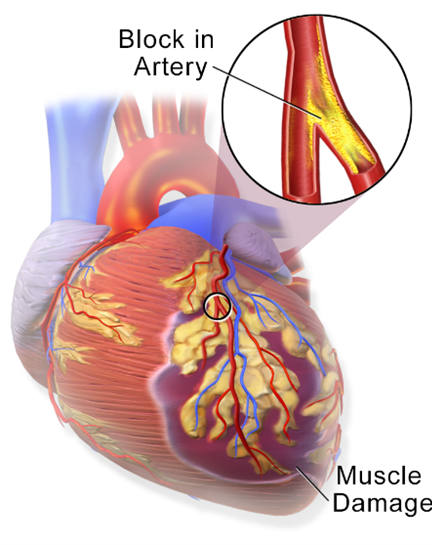What is the cardiac output of a patient whose heart rate is 72 beats per minute with a stroke volume of 90 mL/contraction?
18 Ml
5480 Ml
6,480 mL
4234 mL
The Correct Answer is C
Heart rate: 72 beats per minute Stroke volume: 90 mL/contraction
Cardiac output = Heart rate × Stroke volume
Cardiac output = 72 beats/minute × 90 mL/contraction
To simplify the calculation, you can convert the units:
72 beats/minute × 90 mL/contraction = (72 × 90) beats/minute × mL/contraction
Now, perform the multiplication:
72 × 90 = 6,480
Therefore, the cardiac output is 6,480 mL per minute.
The correct answer is:
C. 6,480 mL
Nursing Test Bank
Naxlex Comprehensive Predictor Exams
Related Questions
Correct Answer is ["18"]
Explanation
Step 1: Convert the patient's weight from pounds to kilograms. 130 pounds ÷ 2.205 (1 pound = 0.453592 kilograms) ≈ 58.97 kilograms
Step 2: Calculate the total dosage of Dobutamine required per hour based on the weight-specific dose. 2.5 mcg/kg/min × 58.97 kg = 147.425 mcg/min
Step 3: Calculate the infusion rate (mL/hr) using the concentration of Dobutamine in the prepared solution. The solution contains 250 mg of Dobutamine in 500 mL, which means there are 250,000 mcg of Dobutamine in 500 mL. To determine the mL/hr, divide the required dosage (147.425 mcg/min) by the amount of Dobutamine in 500 mL (250,000 mcg) and multiply by 500 mL (volume of the solution).
(147.425 mcg/min ÷ 250,000 mcg) × 500 mL ≈ 0.295 mL/min
To get the mL/hr, we convert the rate from minutes to hours (60 minutes = 1 hour):
0.295 mL/min × 60 min/hr ≈ 17.7 mL/hr
Round the answer to the nearest whole number:
Approximately 18 mL/hr of Dobutamine should be administered to the patient.
Correct Answer is A
Explanation
The characteristics described in the monitor strip analysis suggest ventricular tachycardia. The absence of a visible P wave and the wide and distorted QRS complex indicates that the electrical impulse is originating in the ventricles rather than the atria. The ventricular rate of 196 and regular R-R intervals further support the diagnosis of ventricular tachycardia.
B. Atrial fibrillation in (option B) is incorrect because it is characterized by irregularly irregular R-R intervals and the absence of discernible P waves. The QRS complex is typically narrow
C. Atrial tachycardia in (option C) is incorrect because it would have a rapid atrial rate with regular R-R intervals, and P waves may or may not be discernible. The QRS complex is typically narrow.
D. Ventricular fibrillation in (option D) is incorrect because it would present as a chaotic, rapid, and irregular electrical activity with no discernible P waves, QRS complexes, or regular R-R intervals. It is a life-threatening emergency that requires immediate defibrillation.
Therefore, based on the provided information, the nurse would interpret the patient's cardiac rhythm as ventricular tachycardia. However, it is important to note that an accurate interpretation should be made by a qualified healthcare professional, and the patient's clinical context should also be considered.

Whether you are a student looking to ace your exams or a practicing nurse seeking to enhance your expertise , our nursing education contents will empower you with the confidence and competence to make a difference in the lives of patients and become a respected leader in the healthcare field.
Visit Naxlex, invest in your future and unlock endless possibilities with our unparalleled nursing education contents today
Report Wrong Answer on the Current Question
Do you disagree with the answer? If yes, what is your expected answer? Explain.
Kindly be descriptive with the issue you are facing.
